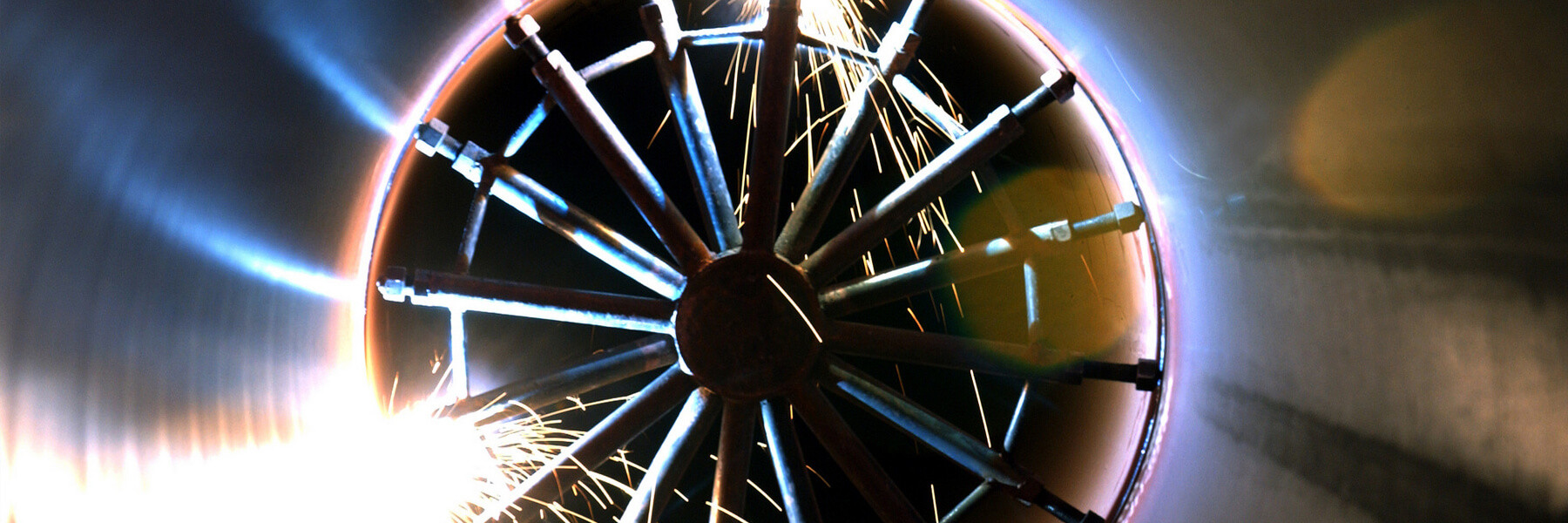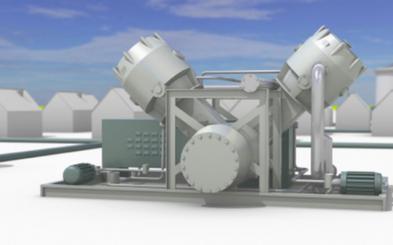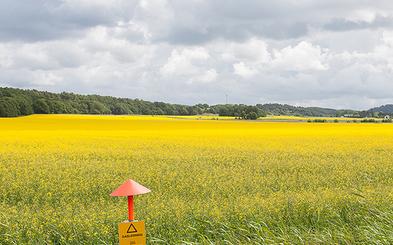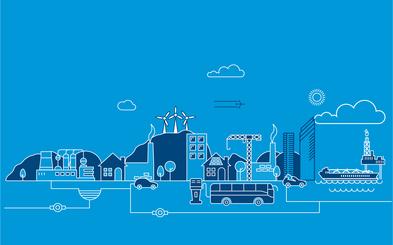INNOVATIVE PROJECTS PLATFORM
ENTSOG and its Members (TSOs) invites you to a new interactive platform called Innovative Projects Platform. To efficiently build on its Members efforts to promote or contribute to innovative technologies, regulation and business models, and partnerships across the value chain, ENTSOG have initiated the identification process to map TSOs’ partnerships on Research, Development and Innovation (RDI) activities.
The result is the creation of a public platform for communication and exchange of best practices applied at national level.
These innovative solutions focus on biogas, power to gas, hydrogen, CNG and other innovative applications to support the achievement of the current EU goals of reducing GHG emissions.
*Disclaimer: The content published on this page is information owned by TSOs and not by ENTSOG. It is therefore published on behalf of TSOs. Please note terms and conditions of use of the website (including article 7) are fully applicable to this page.
Technology
Discover here how technologies can optimise the usage of the grid, make digital layer connections and support decarbonisation of the EU gas system. Technology R&D has a vital role in the energy transition. ENTSOG Members (TSOs) are developing new and innovative technologies to offer sustainable solutions for the gas sector.
Regulation & business model
Stay informed on how ENTSOG Members (TSOs) engage in development of the new energy products and services to foster uptake of renewable and decarbonised gases into the grid.
Partnership
Look at new partnerships and initiatives formed by ENTSOG’s Members (TSOs). They are actively working together as well as with various stakeholders on projects aimed at decarbonisation of the gas sector and of the whole EU economy.
Hydrogen
Hydrogen can be produced from diverse process technologies. Hydrogen can be produced via steam methane reforming and blended with natural gas to be transported via existing grid infrastructure and contribute towards decarbonisation.
Innovation & Transition
Technological innovation is important for the transition to low carbon economy and combating climate change. New technologies such as power-to gas, biomethane, hydrogen, CNG will enable this transition.
Biogas
Biogas is obtained via the anaerobic decomposition of the organic matter. After the process of upgrading, biogas becomes biomethane with the same quality standard as natural gas and can be transported via the existing grid infrastructure.
CCS
Carbon Capture and storage is the process of capturing waste CO2 from large point sources, such as fossil fuel power plants, transporting it to a storage site, and depositing it where it will not enter the atmosphere. The aim is to prevent the release of large quantities of CO2 into the atmosphere.
Power to gas
Power-to-gas is the conversion of electrical power into a gaseous energy carrier like e.g. hydrogen or methane. This technological concept is considered to be an important tool in the energy transition.
CNG
Compressed Natural Gas (CNG) is a fuel source that is made from compressing natural gas to less than 1% of its standard atmospheric volume. CNG combustion produces fewer undesirable gases than other fossil fuels.
Digitalisation
Digitalisation can bring various benefits to day-to-day operations such as enhanced control over the gas quality and cost reductions. TSOs look at data-driven solutions to boost performance, efficiency and competitiveness.
Heating & Cooling
Cutting the energy consumption in heating and cooling in buildings and industry can be achieved through various technologies. TSOs are working on developing cost-efficient solutions for the decarbonisation of this sector.
Certification of green gases
To ensure the cross-border scale up and tradability of renewable, decarbonised and low-carbon gases. This can be achieved via pan European Guarantees of Origin and Certification Schemes.
GRTGaz
Innovation in renewable gases
Interview with Thierry Trouvé to present the strengths and the place of renewable gas in the energy transition as well as the campaign 'Energy Possibles'.
Contact: jeanmarc.brimont@grtgaz.com
Swedegas AB
The Gas Barometer
The Gas Barometer is designed to measure the volume of biogas that is being transported and used in the gas distribution network. This pioneering initiative will allow Swedegas, in partnership with the companies that trade in gas in the network in western Sweden, to produce quarterly figures showing how much biogas is being transported and used in the network. The Gas Barometer will monitor growth in the use of biogas in the network. It can provide an illustration of the impact that control strategies and trading patterns in Sweden and in other countries are having on the market.
Contact: hanna.paradis@swedegas.se
National Grid Gas
Asset Information Modelling (AIM)
Producing intelligent models of gas transmission assets is set to become quicker, cheaper and more accurate, thanks to an extension of our Building Information Modelling (BIM) project, called AIM. An AIM, or Asset Information Model, provides all the information necessary to support the management of an asset. For example, it logs its precise location, operational data, information about work carried out and its existing condition.
Contact: Neil.Tansley@nationalgrid.com
National Grid Gas
Customer Low Cost Connections (CLoCC)
A project aiming to minimise the time and cost of connecting to the transmission system. It will develop a new web-based customer connections platform which aims to improve a customer’s application experience. The project will also produce ‘off-the-shelf’ standardised designs for connections that can be used regardless of the customer, size of connection, or type of gas. Project CLoCC is primarily pitched towards smaller and unconventional gas customers for whom connecting to the NTS under the current arrangements can be extremely challenging.
Contact: Anne-Marie.Liszczyk@nationalgrid.com
Gasunie Transport Services
Greengas booster
Attero starts a pilot with Gasunie Transport Services (GTS) and Enexis for a large compressor (booster) that links the regional supply of green gas with the national demand. Attero wants to expand the production of green gas in Wijster, but it can not lose a larger production locally in the summer. In the summer period, the local demand for gas is low, while the production of green gas remains continuous. With the use of the booster, production can be fed throughout the year because the national network offers unlimited sales opportunities.
Contact:
Snam Rete Gas S.p.A.
Cubogas
With the newly created company Cubogas, wholly-owned by Snam4Mobility (the Snam company developing infrastructure for refuelling CNG and LNG engines), Snam has enlarged its activities with a business arm dedicated to technological solutions for natural gas supply stations. Snam will be able to increase the level of service it offers to investors in natural gas- and renewable gas-powered transport, as it will be supplying one of the best technologies for pollution reduction available helping the improvement of air quality.
Contact: salvatore.ricco@snam.it
Fluxys Belgium S.A.
Gaz Métro and Fluxys
Gaz Metro and Fluxys work together to develop the liquefied and compressed natural gas market. The agreement will pave the way for an exchange of information and expertise related to LNG and CNG, particularly on the technical, commercial, contractual, regulatory, fiscal and administrative fronts. The two parties, which indirectly share a major shareholder in the Caisse de dépôt et placement du Québec, have also agreed to explore co-investment opportunities as interesting projects take shape.
Contact: michel.vandenbrande@fluxys.com
Swedegas AB
Power to Gas
Swedegas has taken the initiative to develop Power to Gas in Sweden together with representatives from the Swedish energy industry. As part of a preliminary study, the conditions for Power to Gas were examined from a Swedish perspective. We are now planning to start up a pilot plant in Sweden.
Contact: hanna.paradis@swedegas.se
TERÉGA
New solutions for biomethane and future projects such as Power to Gas
Terega activities focusing on biomethane, hydrogen and power-to-gas.
Contact: cecile.boesinger@terega.fr
National Grid Gas
Future of Gas
On 9 March 2018 National Grid published the Future of Gas: How gas can support a low carbon future. This report is the end product of collaboration with over 150 stakeholders in order to develop divergent pathways of the future to meet the 2050 carbon targets, to test National Grid's thinking about the capabilities of the gas network. The Future of Gas report detailed National Grid's next steps as well as a series of policy recommendations. The key themes of the report include: Decarbonisation of heat, Decarbonisation of Transport, Decarbonisation of Industry, Whole Energy Systems and Future Networks and Markets.
Contact: Gareth.Davies@nationalgrid.com










